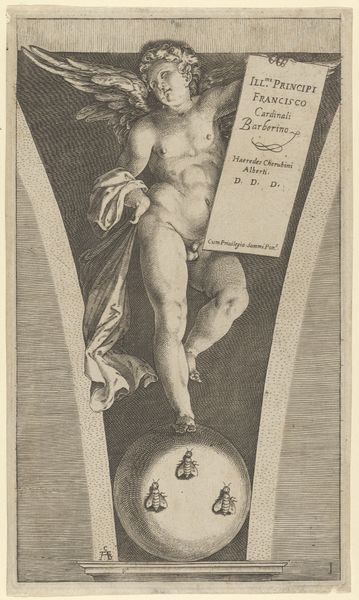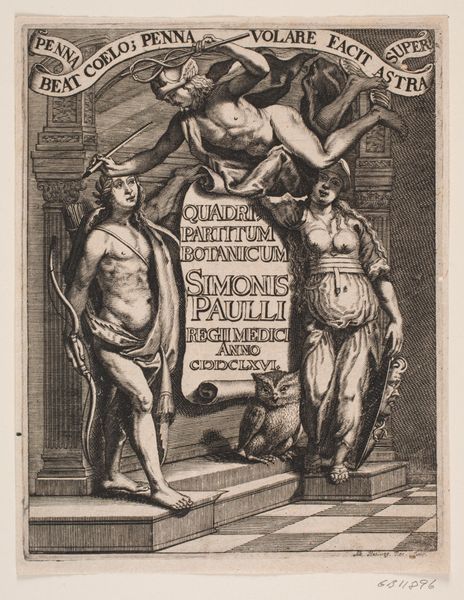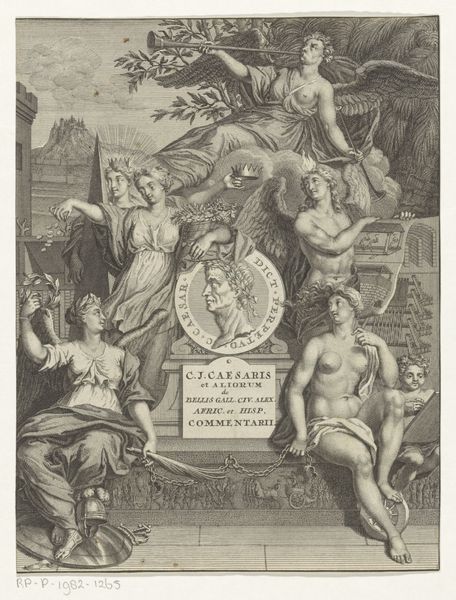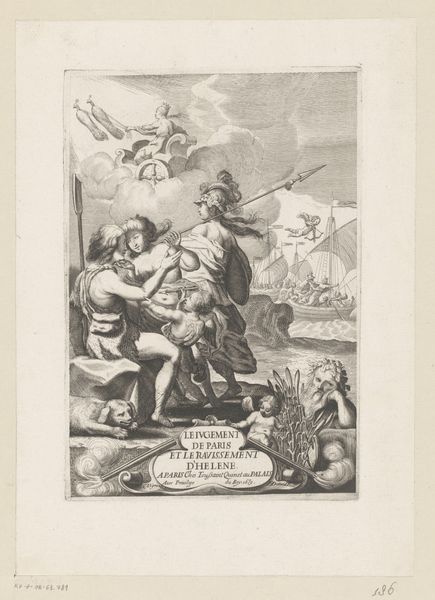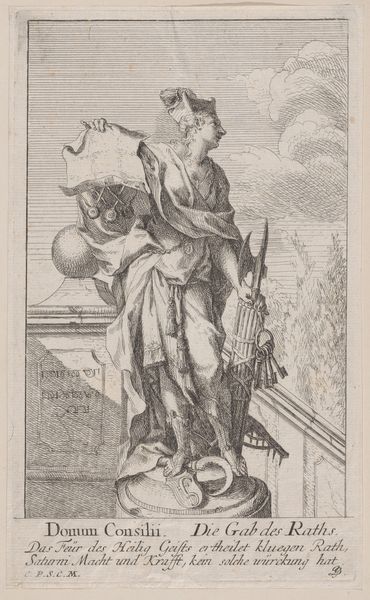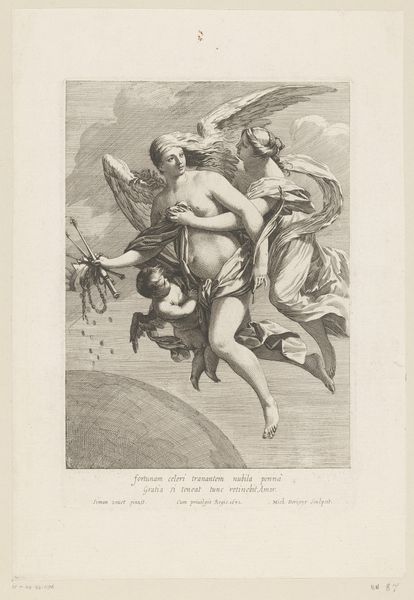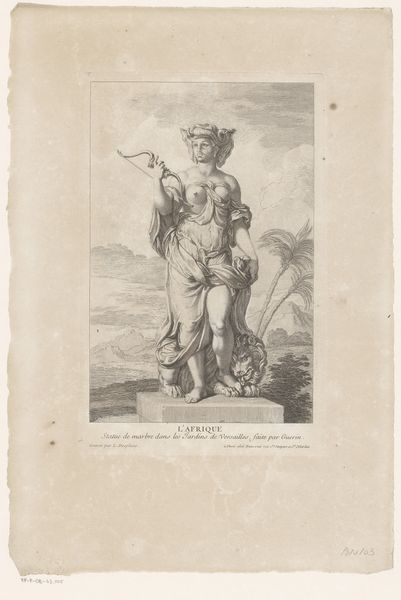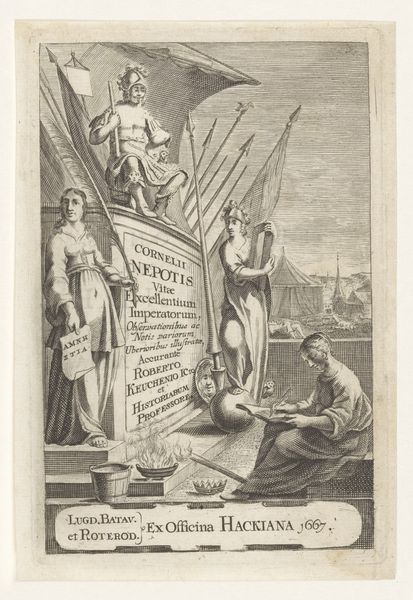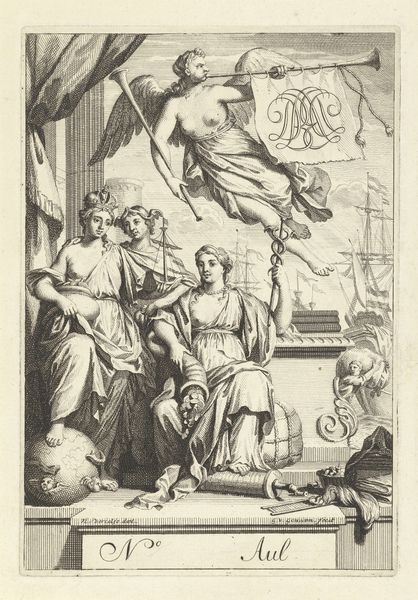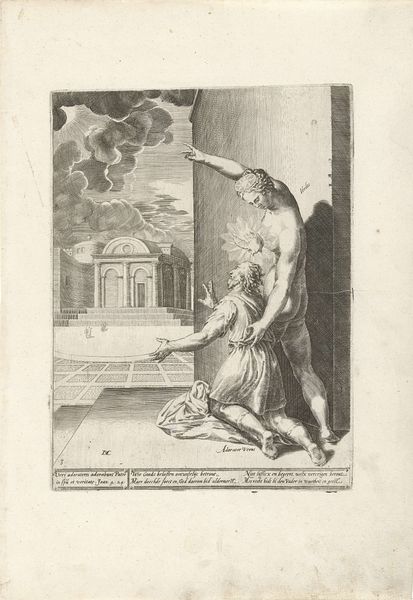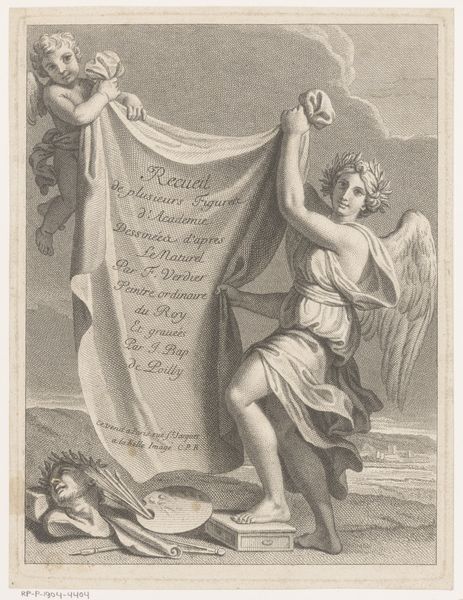
print, engraving
#
allegory
#
baroque
# print
#
caricature
#
figuration
#
engraving
Dimensions: height 234 mm, width 165 mm
Copyright: Rijks Museum: Open Domain
Curator: We're looking at "Mercurius met wereldkaarten" by Claude Mellan, created in 1649. It’s currently held at the Rijksmuseum. Editor: The first thing that strikes me is the level of detail achievable in an engraving. Look at the incredibly fine lines – it creates almost a photorealistic texture on the skin, especially the drapery! Curator: Indeed. Mellan masterfully employs the allegorical language typical of the Baroque. Here, we see Mercurius, or Hermes, the messenger god associated with trade and communication. The map ties him directly to commerce and knowledge exchange across the globe. Editor: Considering the materiality of printmaking, I wonder how the creation of a print – as opposed to, say, a painting - allowed for the democratisation of this information. Think about how prints made images accessible to a broader audience than just wealthy patrons. How did this mode of mechanical reproduction shift what this figure, Mercury, even meant? Curator: An interesting thought. The symbols become widely diffused. For example, the caduceus—the staff entwined with snakes that Mercurius holds—isn't merely an attribute; it carries layers of meaning, from medicine and negotiation to commerce itself. Its very repetition imprinted the symbol onto the collective memory. Editor: Absolutely. And look at the maps themselves—two-dimensional projections vying for accuracy. One might analyze the cost of paper, ink and production time, but I would argue that the geographical accuracy held tangible value for the merchants commissioning or consuming these prints, giving them an economic edge. What we have in front of us, you see, isn't just a depiction, it's a form of infrastructure. Curator: A clever perspective. I was drawn to the inscription “FACIT GEMINO COMMERCIA MVNDO.” It posits that this is all ‘done by twin commerce for the world’. I think the tension is in ‘commerce’ itself; this period underwent immense changes and these powerful symbols could gloss over darker implications. Editor: Right, such as who benefits from this flow of information and material. As someone concerned with production, I have to see it from a human perspective. How were these made? What resources and what labor contributed to them? It becomes difficult, sometimes, to disentangle ourselves from romanticized portrayals and probe material realities. Curator: It truly is an artwork that rewards multiple interpretations. It's fascinating to see how it resonates so differently through the lens of iconography and materialism.
Comments
No comments
Be the first to comment and join the conversation on the ultimate creative platform.
